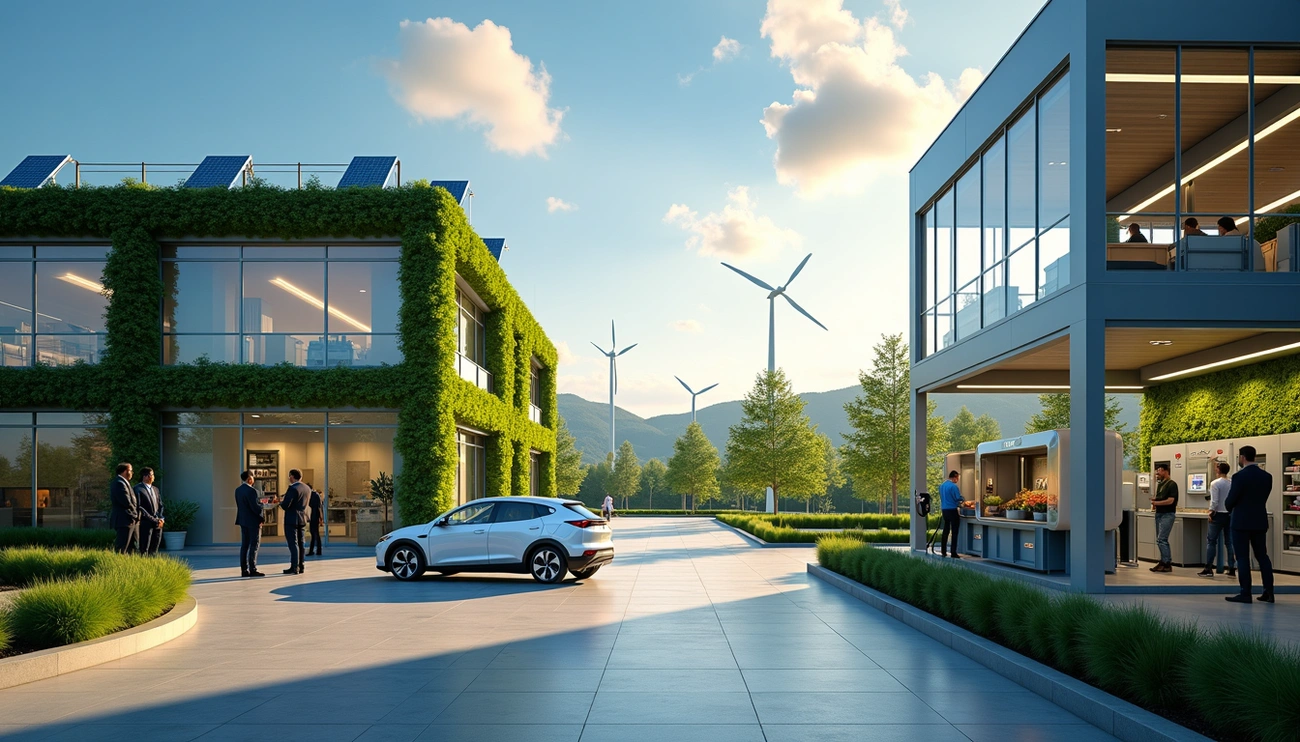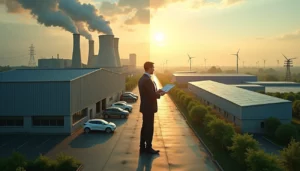Economic sustainability development creates a balance between long-term financial growth and environmental and social responsibility. Organizations that adopt eco-friendly practices can thrive in changing markets without compromising future generations’ needs. Traditional growth models have given way to more inclusive, forward-thinking economic strategies.
Economic sustainability serves as a crucial element of the United Nations’ Sustainable Development Goals (SDGs). These goals give governments and businesses a clear roadmap that balances financial objectives with environmental protection. The economics of sustainable development promote renewable energy adoption and create opportunities for customer loyalty and economic stability. Businesses can distinguish themselves in the marketplace by attracting environmentally conscious consumers.
This piece outlines proven methods that work to achieve economically sustainable development goals. We will get into practical approaches that support long-term economic growth while protecting social, environmental, and cultural aspects of communities. Organizations can create lasting positive change and ensure their financial success by understanding these economically sustainable development examples.
Understanding Economic Sustainability in Practice
Economic sustainability includes practices that support long-term economic development and protect social, environmental, and cultural aspects of communities [1]. This concept creates a balance between economic growth and responsible use of resources [2].
Economic sustainability works through three connected pillars:
- Economic sustainability: A balance between growth and resource management
- Environmental sustainability: Protection of ecosystems and reduced ecological effects
- Social sustainability: Better equity, healthcare, and quality of life [2]
These elements work together to create a system that helps tackle climate change, resource scarcity, and social inequality [2]. Businesses integrate ecological, economic, and social practices throughout their production and commercial cycles to stay economically sustainable [3].
Organizations implement economic sustainability through various methods. They adopt energy-efficient policies, create durable, recyclable products, and move from linear (produce-use-discard) to circular economy models [3].
Companies need to manage resources responsibly. This approach will have a minimal environmental impact, promote better social equity, and foster a stronger economy while encouraging ethical business practices [4].
State-of-the-art solutions and adaptability in economic activities make sustainability possible. Companies that welcome this approach often lead the way with new technologies. These innovations bring both environmental and financial benefits that propel long-term success [2].
Why Economic Sustainability Matters for Long-Term Growth
The business value of economic sustainability continues to grow stronger. Companies that adopt environmentally responsible practices see their GDP grow 1.7% higher than others after five years [5]. These businesses are also 1.4 times more likely to create breakthrough innovations when they make sustainability part of their strategy [6].
Customer choices support this shift. Studies show 78% of Americans think a sustainable lifestyle matters [7]. Around the world, 73% of people say they’ll change their buying habits to help the environment [6]. Products with ESG claims grew 28% over five years, beating other products by 8 percentage points [7].
Economic sustainability brings several financial advantages:
- Lower operating costs through better resource use
- Protection from unpredictable resource costs and supply problems
- Better market position and brand image
- More opportunities to innovate
Economic sustainability helps solve the problem of limited resources. Natural resource use worldwide is expected to increase by 60% by 2060 [8]. Environmentally responsible practices help keep economic growth steady and protect national security [9].
The relationship between companies and their people plays a vital role. Businesses where leaders and employees are well-aligned on goals perform 13% better financially than those that are not [10]. Economic sustainability isn’t just a good strategy – it creates lasting business value.
Proven Methods for Achieving Economic Sustainability
Evidence-based strategic approaches support successful economic sustainability methods. Studies show that combining “soft” behavioral interventions with economic incentives creates the best results to promote sustainable consumption [11]. Higher-intensity subsidies are more effective than lower ones in guiding public behavior toward environmentally friendly choices.
Products with ESG-related claims drove 56% of all growth over five years—about 18% more than expected from their original market position [7]. These products demonstrated a 1.7 percentage-point compound annual growth rate advantage over conventional alternatives.
Organizations need measurable Key Performance Indicators (KPIs) to achieve economic sustainability. Well-designed sustainability KPIs help businesses monitor progress in environmental, social, and financial areas [12]. These measurements reveal opportunities to save costs through reduced energy usage, better operational control, and smarter procurement decisions.
Supplier involvement is a vital part of the process, and 80% of companies now include sustainability goals in their procurement plans [13]. Companies build more resilient supply chains through focused supplier engagement, targeted incentives, and skill development.
Circular design principles help materials retain their value through multiple life cycles [14]. This approach prevents waste by integrating regenerative practices throughout product development.
Conclusion
Economic sustainability development shows a fundamental move in how businesses plan their long-term growth. Companies that balance their financial goals with environmental protection and social responsibility gain an edge in today’s evolving markets. Studies show that eco-friendly practices deliver tangible benefits. These include 1.7% GDP growth after five years and a competitive advantage through consumers who prefer environmentally responsible products.
Economic, environmental, and social sustainability pillars work together to build resilient business models. Companies that welcome this integrated approach see more innovation, lower operating costs, and better market differentiation. American consumers support this trend, with about four-fifths making sustainable lifestyle choices.
Success depends on the right strategies. Combining behavioral changes with economic incentives creates the best results in sustainable consumption. Businesses need measurable KPIs to track progress and identify opportunities to reduce costs. They also need to collaborate with suppliers to translate sustainability goals into tangible procurement targets, thereby building stronger supply chains.
Circular design principles help prevent waste by keeping material value through multiple life cycles. This regenerative approach helps solve the lack of resources while supporting economic growth. Moving from linear to circular economy models has become necessary rather than just an ideal goal.
Economic sustainability serves both strategic needs and creates lasting business value. Companies using these proven methods can grow financially while helping preserve the environment and promote social equity. Without doubt, the future belongs to businesses that see sustainability not as a barrier to growth but as its foundation.
Key Takeaways
Economic sustainability development offers a proven pathway to long-term business success by balancing financial growth with environmental and social responsibility. Here are the essential insights every organization should know:
• Sustainable practices drive measurable growth: Companies implementing sustainability strategies experience 1.7% GDP growth after five years and are 1.4 times more likely to achieve innovation breakthroughs.
• Consumer demand creates competitive advantage: 78% of US consumers prioritize sustainable lifestyles, with ESG-focused products achieving 28% cumulative growth over five years—outpacing conventional alternatives by 8 percentage points.
• Three-pillar approach ensures resilience: Economic sustainability requires balancing economic growth, environmental protection, and social equity to create robust business models that withstand market volatility.
• Strategic implementation maximizes results: Combining behavioral interventions with economic incentives, establishing measurable KPIs, and engaging suppliers in sustainability initiatives delivers optimal outcomes.
• Circular economy models prevent waste: Transitioning from linear “produce-use-discard” models to circular design principles maintains material value through multiple life cycles while addressing resource scarcity.
The evidence is clear: sustainability isn’t just an ethical choice—it’s a strategic imperative that drives innovation, reduces costs, and positions businesses for long-term success in an increasingly resource-conscious marketplace.
FAQs
Q1. What are the key components of economic sustainability? Economic sustainability involves balancing economic growth with environmental protection and social responsibility. It includes practices such as efficient resource management, the adoption of renewable energy, the development of durable products, and the transition to circular economy models.
Q2. How does economic sustainability benefit businesses? Businesses that implement sustainable practices often experience increased GDP growth, higher innovation rates, reduced operating costs, and improved brand reputation. They also gain protection against resource price volatility and supply chain disruptions.
Q3. What role do consumers play in economic sustainability? Consumers significantly influence economic sustainability. Research shows that 78% of US consumers consider a sustainable lifestyle important, and products with ESG-related claims have shown higher growth rates compared to conventional alternatives.
Q4. How can companies measure their progress in economic sustainability? Companies can track their economic sustainability progress by establishing measurable Key Performance Indicators (KPIs) across environmental, social, and economic dimensions. These metrics help identify cost-saving opportunities and inform decision-making processes.
Q5. What is the circular economy model, and why is it important for sustainability? The circular economy model is an approach that aims to eliminate waste by maintaining the value of materials through multiple life cycles. It’s crucial for sustainability as it addresses resource scarcity concerns while supporting continued economic growth, moving away from the traditional linear “produce-use-discard” model.
Our carbon experts help production studios frame strategy, train teams and track results — tailored to operational constraints.





